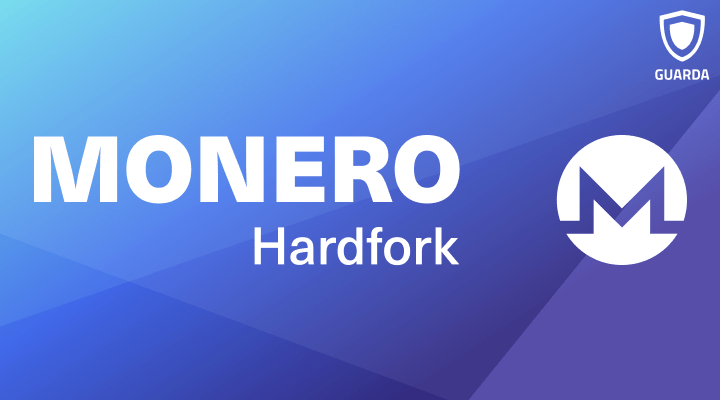Monero Hardfork 2020

What is Monero and its hardfork?
Monero (XMR) is an open-source cryptocurrency that was launched in April 2014. Its main feature is the complete anonymity of transactions, a high level of decentralization, and confidentiality. You can learn more about what it is and all its subtleties in our Academy. Create your own Monero Wallet or buy XMR with Guarda.
However, today, we will talk about the hardfork, which was announced back in August and recently launched.
Monero history
Monero’s beginnings were relatively modest. On April 9, 2014, the Bitcointalk thankful_for_today user started the story. He created a thread where he published the creation of BitMonero. This name is Bit’s compound (by Bitcoin) and Monero (from Moneda in Esperanto). This project had been created as a hardfork by Bytecoin, improving some of its features. However, the project was not adopted well, and quickly the community took over. The name of the project was immediately changed to Monero, and the history of this crypto was written.
Thanks to its focus on privacy through the use of the CryptoNight algorithm, Monero experienced rapid growth. However, new improvements came to this project. In 2017, the project included a new algorithm to make transactions even more private. This was thanks to the development of a stealth algorithm by Greg Maxwell, based on the recommendations of Shen Noether. The algorithm was called Ring Signatures. Shortly after that, Ring Confidential Transaction was included, one of the significant advances introduced by Monero, which allows so-called confidential transactions.
Monero received another significant boost in adoption in 2017, mainly because of its multi-platform capability and ease of programming. The same that earned it good and bad reputation in the crypto world. Like the use of Coinhive to exploit Monero from web pages using the users’ device without their authorization. Alternatively, the adoption of Monero by Change.org to obtain funding for it. Every one of these actions had a significant impact on the history that Monero has made as a project. A history that has allowed it to grow and position itself as one of the significant currencies of the crypto world.
Monero Bulletproof
This is a zero protocol created by Monero in order to improve the crypto. For its application, the developers of Monero had to implement a hardfork of its blockchain. All this because it made very marked changes in the way transactions and blocks are handled. Nevertheless, the result of this work was pleasantly rewarded. With the arrival of this new system, Monero notably improved its transaction capacity and security level. In addition to all this, the network decreased its bandwidth requirements since transactions required very little data to be transmitted and received.
Bulletproof’s primary work is focused on hiding the addresses of a transaction. This new algorithm is more efficient in speed and size than the previous algorithm used in conjunction with the Confidential Transaction Rings.
What was the fork that took place recently?
The update, which was scheduled for Q4 2020, developed a new interaction concept with the mechanism. The binding ring signature plan, the compact binding spontaneous anonymous group (CLSAG), has been pumped over.
This hardfork completely changes the established course of things. CLSAG hardfork was activated on October 17, 2020. To fully interact with the network, the user must update his wallet because the update is critical. However, we at Guarda have already taken care of this and have taken all sorts of measures in order to be able to catch and update our client. This fork does not cause separation of coins and does not force users to switch to a new block check, so from the user’s point of view, everything remains the same as before. The Proof-of-Work consensus and the RandomX mining algorithm are not affected by this update.
What does CLSAG change in the network?
The new ring signature allows Monero algorithms to process and validate transactions more quickly and easily. According to various opinions, the net amount of data can be reduced by 20-30%. More details will be seen within a certain amount of time after implementation. In turn, this situation leads to a 20% increase in verification performance, coupled with improved XMR protocol security.
This marks the most significant improvement in project scalability since the introduction of bulletproof systems in 2018. The update also includes several small security improvements, primarily concerning dandelion ++, responsible for IP – user addresses and hiding. The rest of the changes are small fixes.
Unlike previous updates, the mining algorithm of Monero will not change. This algorithm was often modified to disadvantage ASIC-mining. However, the project update in October 2019 included RandomX, which means that networks no longer need to change the mining algorithm to ensure ASIC resistance.
We can say that CSAG implementation is the most significant aspect of the Monero update chain in recent months. The entire Monero audit was formed at the expense of the crypto community and the non-profit open-source technology improvement fund.